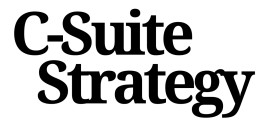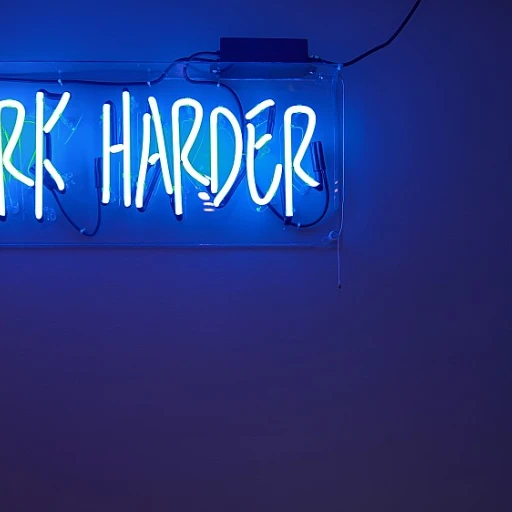
Understanding the Strategic Importance of Cleanroom Services
The Vital Role of Cleanroom Services in Modern Industries
In today's rapidly evolving industrial landscapes, cleanroom services have emerged as a crucial component in maintaining high standards of quality and safety. These meticulously controlled environments prevent contamination, ensuring product integrity in sectors ranging from pharmaceuticals to electronics. The design and construction of cleanrooms are aligned with strict industry standards to meet regulatory compliance, an aspect that's become increasingly significant. Cleanrooms provide specialized cleaning solutions tailored to various industries, each with unique requirements. For instance, the medical device industry relies heavily on precise contamination control to safeguard patient health. Cleanroom cleaning protocols and equipment must adhere to ISO standards, reinforcing the facility's commitment to regulatory compliance. Additionally, cleanroom solutions offer a strategic advantage, combining design and equipment to foster innovation and efficiency. As industries continue to evolve, embedding these controlled environments in their strategic initiatives is imperative, aligning with modern business goals. The focus on aligning operations with business objectives will be further explored in subsequent sections, emphasizing the need for comprehensive strategic planning in cleanroom operations. To delve deeper into the interface of strategy and operational excellence, consider exploring strategic excellence in broader business contexts.Aligning Cleanroom Services with Business Goals
Linking Cleanroom Initiatives to Strategic Objectives
To maximize the strategic impact of cleanroom services, it is crucial to align these operations with overarching business goals. This involves integrating cleaning services and contamination control within the larger objectives of the company, ensuring that cleanroom solutions are not merely a backdrop but a significant contributor to your strategic initiatives. Cleanroom environments play a pivotal role across various industries, from medical device manufacturing to high-tech electronics. These controlled environments must adhere to stringent industry standards and regulatory compliance. Understanding these requirements allows companies to design cleanroom strategies that directly support business growth and innovation.- Strategic Alignment: Ensure that your cleanroom operations align with your company's mission and strategic direction. This not only enhances compliance and performance but also leverages cleanroom construction and management as a competitive advantage.
- Enhanced Product Integrity: By connecting contamination control measures to product and service quality, businesses can ensure high-quality outcomes aligned with customer expectations and industry standards.
- Operational Excellence: Align cleanroom cleaning and cleaning protocols with business objectives to drive operational efficiency. This creates a seamless integration of cleanroom activities into production schedules, optimizing the use of labor and resources.
- Risk Mitigation: Proactively manage risks associated with cleanroom design, equipment, and cleaning services to prevent costly compliance issues and maintain consistent product quality.
Innovative Approaches to Cleanroom Management
Embracing Technological Advancements
In the realm of cleanroom services, embracing technological advancements is pivotal for maintaining a competitive edge. The integration of cutting-edge equipment and automation in cleanroom operations can significantly enhance efficiency and precision. By leveraging advanced cleanroom products and solutions, companies can ensure that their facilities meet the highest industry standards, thereby minimizing contamination risks and ensuring regulatory compliance.
Customizing Cleanroom Solutions
Each industry has unique requirements when it comes to cleanroom environments. Whether it's the medical device sector or high-tech manufacturing, tailoring cleanroom solutions to fit specific needs is crucial. This involves a meticulous approach to cleanroom design and construction, ensuring that the controlled environments are optimized for the particular demands of the industry. By aligning these solutions with business goals, companies can achieve a strategic advantage in their respective fields.
Implementing Robust Cleaning Protocols
Effective contamination control is at the heart of cleanroom management. Implementing robust cleaning protocols is essential for maintaining the integrity of clean rooms. Regular training and updates on cleaning services and standards ensure that personnel are equipped to handle the complexities of maintaining a controlled environment. This not only safeguards the facility but also enhances the quality of the products and services offered.
Fostering Innovation through Collaboration
Innovation in cleanroom management often stems from collaboration with industry experts and stakeholders. By fostering partnerships with professional cleanroom service providers, companies can access a wealth of knowledge and experience. This collaborative approach can lead to the development of innovative solutions that address specific challenges faced by the company, ultimately driving growth and success.
For companies looking to optimize their cleanroom services, mastering the annual operating plan is a critical step. It ensures that all strategic initiatives are aligned and executed effectively, paving the way for sustained competitive advantage.
Risk Management in Cleanroom Operations
Mitigating Risks for Sustainable Cleanroom Operations
Navigating the waters of risk management within cleanroom operations requires a keen understanding of industry standards and regulatory compliance. Ensuring that your cleanroom services adhere to these benchmarks is not just about avoiding penalties; it's vital for maintaining the credibility and trust of your products and solutions among clients in various industries. Risk management in cleanroom environments focuses primarily on minimizing contamination while maximizing operational efficiency. Here, the emphasis is on:- Employing high-quality cleaning protocols: Rely on robust contamination control measures and effective cleanroom cleaning services designed to maintain the integrity of your environment.
- Monitoring and maintaining equipment: Regular inspections and maintenance of cleanroom equipment prevent unexpected failures that might compromise the clean environment.
- Ensuring regulatory compliance: Keep abreast of the latest ISO standards and industry regulations, ensuring your cleanroom construction and design are aligned with these requirements.
- Staying proactive with contamination control: Implementing preventative measures and real-time monitoring can significantly reduce risks associated with contaminants.
Measuring Performance and ROI of Cleanroom Services
Evaluating Efficiency and Return on Investment in Cleanroom Functions
To ensure that cleanroom services are delivering maximum value to your company, focus on evaluating the performance and return on investment (ROI) of these services. Efficient cleanroom operations not only enhance product quality and compliance but also significantly impact the bottom line across various industries.- Performance Metrics: Establish clear metrics that quantify cleanroom effectiveness. Factors such as contamination control efficiency, adherence to cleaning protocols, and compliance with industry standards like ISO can serve as strong indicators of performance. Accurately tracking these metrics will aid in identifying areas needing improvement.
- Cost-Benefit Analysis: Compare the costs involved in maintaining cleanroom environments, including cleanroom design, construction, equipment, and cleaning services, against the benefits derived from high-quality cleanroom products. This analysis can highlight economic advantages and demonstrate the strategic importance of professional cleanroom management.
- Integration with Business Objectives: Align cleanroom processes with broader business goals, ensuring that they contribute to larger strategic objectives. Assess how well your current cleanroom setup supports these goals and whether innovative solutions could increase alignment and effectiveness.
- Feedback Mechanisms: Implement regular feedback loops to assess satisfaction with cleanroom services from stakeholders within the company and external clients. Feedback can provide insights into the functionality of your cleanroom solutions and highlight potential areas for enhancement.
Future Trends in Cleanroom Services
Emerging Trends Shaping the Future of Cleanroom Services
As industries continue to evolve, so do the technologies and methodologies that define cleanroom services. Keeping an eye on future trends is vital for maintaining strategic advantage in environments that demand stringent contamination control and compliance.
One key trend is the adoption of smart technology within cleanroom environments. The integration of IoT devices and real-time monitoring systems offers new possibilities for enhanced contamination control. These solutions enable precise control over cleanroom parameters, allowing companies to streamline operations and promptly address any deviations from industry standards.
Another significant trend is the focus on sustainability in cleanroom construction and cleaning protocols. As environmental concerns grow, industries are working towards minimizing the environmental impact of their operations. This includes using eco-friendly materials for cleanroom design, reducing waste, and optimizing energy consumption through advanced cleaning equipment.
The increasing complexity of regulatory compliance is also shaping the cleanroom services landscape. With more stringent regulations across various sectors like pharmaceuticals and medical device manufacturing, companies are investing in robust compliance management systems. These systems ensure that cleanroom services align with ISO standards and other regulatory requirements for high-quality performance.
Additionally, the demand for customized cleanroom solutions is rising. Businesses are seeking tailored services that meet their unique requirements, driven by specific industry needs. This trend highlights the importance of versatile cleanroom services that can adapt to varying levels of contamination control and cleanroom cleaning across diverse environments.
In preparing for the future, companies must prioritize innovation, sustainability, and regulatory compliance in their clean room strategies. By doing so, they can stay ahead in the competitive landscape and leverage cleanroom services as a strategic advantage for their business growth.














